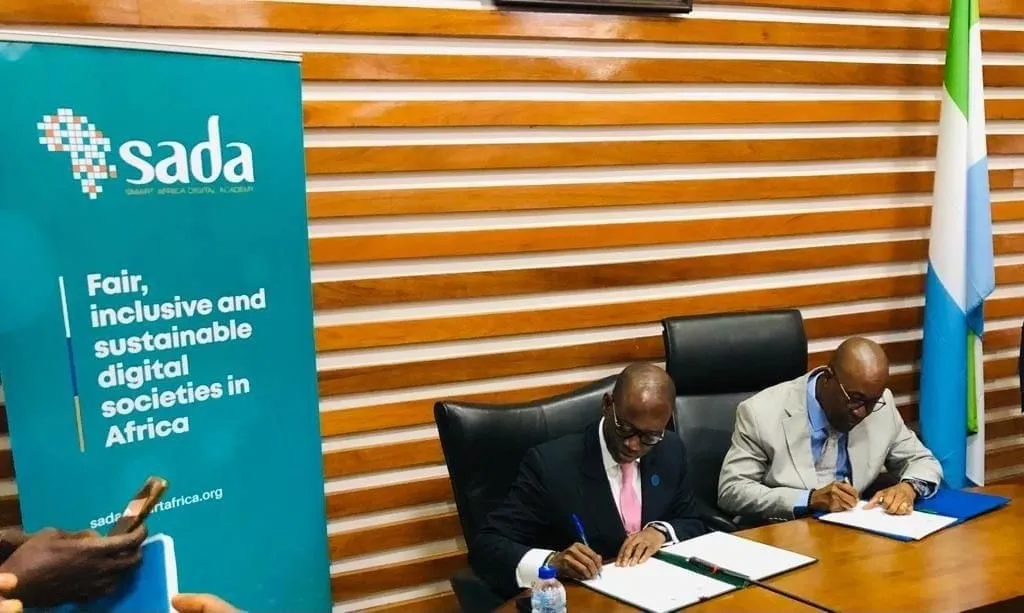How Fiber Optic Technology is Revolutionizing Developing Countries
Developing countries are pushing to close the digital divide. This week, the Minister of Information of Sierra Leone, Mr. Mohamed Rahman Swarra, signed the Memorandum of Understanding between the Ministry of Information and Communications and the Smart Africa Digital Academy (SADA). The Signed MoU is about Sierra Leone's digital space and lays the foundation for bridging the digital divide.
The internet has become essential to everyday life, from socializing to education, healthcare, and more. However, not everyone has the Internet, particularly those in developing countries. This technology access gap is commonly referred to as the digital divide. Fortunately, fiber optic technology has emerged as a solution for bridging this divide, revolutionizing accInternethe Internet in developing countries. This article will explore how fiber optic technology impacts developing countries and transforms access to education, healthcare, and economic opportunities.
1. Introduction: The Digital Divide
Understanding the Digital Divide
In today's digital age, the internet is no longer a luxury but a necessity. However, not everyone has access to the internet. The digital divide refers to the gap between those with access to digital technologies and those without access. According to recent statistics, over 3.6 billion people worldwide do not have internet access.
This gap is especially prevalent in developing countries, where inadequate infrastructure and a lack of resources prevent large portions of the population from accInternethe Internet. The good news is that fiber optic technology is revolutionizing how people in developing countries connInternethe internet and is helping bridge the digital divide.
2. The Rise of Fiber Optic Technology
History of Fiber Optic Technology
Advantages of Fiber Optic Technology over Traditional Internet Connection
Fiber optic technology is not new and has been around for decades. However, its use as an internet connection has only become widespread in recent years. Fiber optic cables are made of glass or plastic and use light to transmit data over long distances. This technology offers several advantages over traditional copper cable connections.
Fiber optic cables can transmit data at much higher speeds and over longer distances than copper cables. This allows people in remote or rural areas to access the Internet, which was previously impossible. Fiber optics are more reliable and durable than copper cables and can withstand natural disasters like earthquakes and hurricanes.
3. Fiber Optic Infrastructure in Developing Countries
Current State of Internet Infrastructure in Developing Countries
Role of Governments and Private Sector in Building Fiber Optic Infrastructure
The internet infrastructure in developing countries is inadequate, with most people relying on slow and unreliable internet connections. However, governments and private companies are starting to invest in fiber optic infrastructure to improve connectivity.
Governments are pivotal in building fiber optic infrastructure, as they recognize the importance of internet access for economic growth, education, and healthcare. Private companies are also investing in fiber optics as they see the potential for growth in these developing markets.
However, there are challenges to building fiber optic infrastructure in developing countries, such as high costs and limited resources. Governments and companies must work together to overcome these challenges and bring Internet internet to more people.
4. Benefits of Fiber Optic Technology in Developing Countries
Improved Access to Education
Enhanced Healthcare
Increased Economic Growth and Job Opportunities
The benefits of fiber optic technology in developing countries are immense. Firstly, it can provide improved access to education, allowing students to access online resources and take online classes. This is especially important in remote areas where educational resources may be limited.
Secondly, fiber optic technology can enhance healthcare by allowing doctors and medical professionals to access online resources and collaborate with peers worldwide. This can improve patient outcomes and save lives.
Finally, increased accInternethe Internet can lead to increased economic growth and job opportunities. High-speed internet connections can help businesses grow and connect with customers worldwide. This can lead to new jobs and economic growth in developing countries.
Fiber optic technology is revolutionizing connectivity in developing countries and is helping to bridge the digital divide. With continued investment in infrastructure and technology, more people will have access to the Internet, leading to improved education, healthcare, and economic growth.
5. Impact of Fiber Optic Technology on Education and Healthcare
Fiber optic technology has revolutionized education and healthcare delivery in developing countries. Here are some of how fiber optic technology has made a significant impact in these critical sectors:
Revolutionizing Education
Fiber optic technology has revolutionized education, enabling learners in remote areas to access educational resources and connect with global experts. With high-speed internet connectivity, students can attend virtual classes, watch educational videos, and collaborate with peers in real time. This has improved educational outcomes, reduced dropout rates, and increased access to quality education.
Transforming Healthcare
Fiber optic technology has transformed healthcare delivery in developing countries by enabling telemedicine, remote monitoring, and online consultations. With high-speed internet connectivity, healthcare professionals can provide faster and more accurate diagnoses, monitor patients remotely, and provide medical advice to patients in remote areas. This has led to improved healthcare outcomes, reduced mortality rates, and increased access to healthcare services.
6. Challenges and Solutions for Connecting the Unconnected
While fiber optic technology has the potential to connect the unconnected and revolutionize the way many sectors operate, there are still significant challenges to overcome. Some of these challenges include:
Challenges in Building Fiber Optic Infrastructure in Developing Countries
Infrastructure development is a significant challenge in developing countries, where governments often lack the resources to invest in critical infrastructure. Building fiber optic networks requires substantial investment, and governments must create an enabling environment for private sector investors to participate in infrastructure development.
Cost-effective Solutions for Building Fiber Optic Infrastructure
One way to overcome the cost barrier is for governments to collaborate with private sector investors to share the costs of developing fiber optic networks. Governments can provide tax incentives and regulatory support to encourage private sector investments in infrastructure development. Governments can also leverage innovative financing mechanisms like public-private partnerships to finance critical infrastructure projects.
7. Future of Fiber Optic Technology in Developing Countries
The future of fiber optic technology in developing countries is bright, with emerging trends in fiber optic technology set to drive innovation and growth in the sector. Here are some of the emerging trends in fiber optic technology:
Emerging Trends in Fiber Optic Technology
Emerging trends in fiber optic technology include the development of 5G wireless networks, which promise faster internet speeds, lower latency, and greater bandwidth. Additionally, innovations in fiber optic cables, such as hollow-core fibers and multicore fibers, promise to increase the capacity of fiber optic networks, enabling them to support more users and devices.
Opportunities and Challenges in the Future of Fiber Optic Technology in Developing Countries
The future of fiber optic technology in developing countries presents vast opportunities for growth and development. However, challenges such as limited resources, low literacy rates, and inadequate digital infrastructure must be addressed to fully realize the potential of fiber optic technology.
8. Conclusion: Bridging the Digital Divide
Fiber optic technology is a game-changer for developing countries, bringing communities, industries, and countries closer together. By reducing the digital divide, fiber optic technology can enable developing countries to leapfrog traditional development pathways and achieve rapid economic growth and development. Connecting the unconnected is critical for building a brighter future for all, and fiber optic technology is the key to unlocking this potential.
Summary of the Impact of Fiber Optic Technology on Developing Countries
Fiber optic technology has revolutionized education and healthcare delivery in developing countries. It has also opened up opportunities for growth and development in other sectors, such as agriculture, finance, and tourism.
The Importance of Bridging the Digital Divide
Bridging the digital divide is essential for creating a more equitable world where everyone can access the benefits of the digital economy. Fiber optic technology is crucial for achieving this goal and enabling developing countries to catch up with their peers in the developed world. We can build a brighter future for all through collaboration between governments, the private sector, and international organizations. In conclusion, fiber optic technology is transforming the lives of millions of people in developing countries by providing access to essential services such as education, healthcare, and employment opportunities. The benefits of this technology are undeniable, and governments and the private sector must work together to build the necessary infrastructure to connect the unconnected. By overcoming the challenges and embracing the opportunities of fiber optic technology, we can close the digital divide and create a more equitable world for everyone.



About the Writer
Moses Achi Juana is an accomplished IT professional specializing in Cyber Security and Forensics. He is passionate about leveraging his expertise to drive development, and IT projects in developing countries.
- Moses Achi Juana






abSalam
Lorem ipsum dolor sit amet consectetur adipiscing elit, vestibulum lectus egestas cubilia nam sagittis, nulla posuere habitant